Introduction.
Over WW1, a number of British Hospital ships were sunk either by means of torpedoes or mines. In the period of 1917/1918, when unrestricted warfare was waged on Allied shipping by the German U-Boat arm, it appeared to be a specific policy to target British Hospital ships for destruction.
HMHS Britannic.
Work began on Britannic in Belfast on the 30th. of November 1911, she was a larger sister to both Titanic and Majestic. Originally the WhiteStar Line were to name her Gigantic, but with war clouds on the horizon it was decided to go all patriotic and call her Britannic.

HMHS Britannic hit a mine or was perhaps torpedoed in Aegian, 21st,. November 1916
After Titanic had sunk, the design was changed in Britannic to add extra safety features in the watertight door area, add extra lifeboats etc.
On completion, with the Gallipoli campaign in full cry, the demand for extra hospital ships was evident, and Britannic was fitted out for such a role, so she could accommodate 3,309 patients. The ship was on her 6th. voyage in this role, and on her way to Mudros on the Island of Lemnos with 1,134 on board, it was 0800 ( 8 AM ) on the 21st. of November 1916.
To quote a nurse, Sheila Macbeth, " A BANG sent a shiver down the length of the ship." Britannic had either struck a mine, or taken a torpedo from U-73, she was in the area, and recently laid mines there.
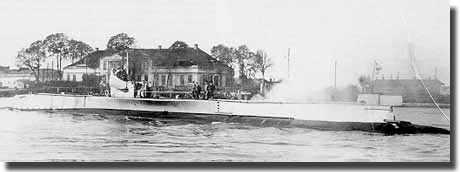
U-73 had laid mines in area where Britannic came to grief.
The Captain tried to beach his ship and kept his propellers turning, these caused two full life boats to be sucked into the turning props, resulting in most of the 30 deaths.
The engines were stopped, an orderly abandon ship was carried out with all her company off into lifeboats, water rushed in, and portholes left open by nurses airing compartments prior to collecting a shipload of casualties, allowed extra water to flow into the ship, hastening her demise. In 55 minutes she had sunk, in less than half the time it had taken Titanic to succumb.
An orderly Abandon Ship was executed, and her lifeboats were able to cope with all on board, the cruiser HMS Heroic, and destroyers HMS Foxhound and HMS Scourge were soon on the scene to collect survivors, besides the 30 who died, another 41 were injured, in the circumstances a light casualty list.
The ship lay quietly on the bottom, undisturbed until Jacques Cousteau found the wreck in 1975, and dived on it the following year, in October 1995, a solo dive was made by Kostes Thoctarides , and Doctor Robert Ballard, who had found her sister Titanic, led a group to dive and film the wreck in 1995. Kevin Gurr led a professional diving team in 1997, and finally in 1998, Project Britannic, a group of amateur divers visited the wreck, and took some stunning photographs.

HMHS Britannic, open portholes in her hull, which hastened her sinking after striking a mine. This photo from Project Britannic is used with the permission of Leigh Bishop.
This final ship in the trio of White Star Liners, never carried one paying passenger, and never sailed the Atlantic route, she remains the largest ocean liner wreck on the sea bed.
HMHS Braemar Castle mined in 1916.
Only two days after Britannic was sunk, Braemar Castle hit a mine and was lost in the same area, which confirmed a mine field had been established in the area, and it is probable that Britannic had struck a mine and was not torpedoed.
HMHS Drina torpedoed 1917.
Built in 1912 by Harland and Wolff, this 11,483 gross tonnage ship serving as a Hospital ship, was torpedoed off Skokholm Island near Pembroke, Wales by German Submarine UC 65 on the 1st. of March in 1917. 15 of her crew died, and the ship sits at 60 metres upside down, and is visited by divers.
Thanks to John Davies for this information.
HMHS Dover Castle torpedoed 1917.
Dover Castle, a ship of 8,271 tons had been built in Glasgow in 1904, in WW1, she was converted to a Hospital ship. With 632 on board, she was torpedoed in the Mediterranean on the 26th. of May 1917. The first torpedo to strike her, killed 7 stokers, and HMS Camelon came to her aid, took off the majority of the crew and the wounded. The Captain, with a volunteer crew stayed on board, believing the ship might be saved, but the U-Boat returned for a second attack, and this hospital ship was gone in three minutes.
HMHS Goorkha mined in 1917.
This Hospital ship when off Malta on the 10th. of October in 1917 ran into a mine, the 372 survivors which included 17 Nursing Sisters soon cleared the ship without any casualties, and the ship under tow made it into the Harbour at Malta.
HMHS Rewa torpedoed January 1918.
This 7,267 ton ship built for the British India Steam Navigation Company in 1906, and and converted to a Hospital ship, having sailed from Malta. was carrying 279 cot and walking wounded cases from Greece. She was in the Bristol Channel, when on the 4th. of January 1918, Wilhelm Werner in his U-55, lined her up, and soon sank her with his torpedoes. Two crewmen died, and the ship was very lucky to get away with such light casualties.
HMHS Glenart Castle torpedoed 1918.
Glenart Castle left Cardiff on the 25th. of February 1918, bound for Brest to load wounded. At 0347 the next day a torpedo struck her, she went down quickly, and only 38 survived from 206 on board. Her Matron, Katy Beaufoy, had served in the Boer War, and all of WW1 to date, already Katy had been lucky, whilst Matron in HMHS Dover Castle, she had missed this ship through illness when she sailed to her doom, being torpedoed in May 1917, but her luck ran out tonight.
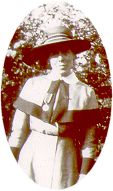 |
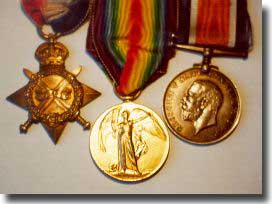 |
| Matron Kaye Beaufoy, Glenart Castle, she also had served in Dover Castle |
Katy's War Medals |
The Birmingham Weekly Post, Saturday March 9, 1918
Miss Katy Beaufoy, the matron on the torpedoed hospital ship, Glenart Castle, was a Birmingaham lady and it is
feared she is among the missing. She was a daughter of the late Mr Thomas Beaufoy, for many years an official of the Birmingham Post Office , and a sister of Mrds J Hward Kirk, of The Grange Shirley, where she made her home.
Miss Beaufoy was matron of the Military Hospital at Exeter when the South African war broke out, and she volunteered for active service, and served throughout the war. For three years she was assistant matron of the Queen of Italy's Polytechnic in Rome, for the training of young Italian nurses, for which she was decorated. Miss Beaufoy volunteered immediately the present war broke out, and for the early months of the war was at Devonport Military Hospital. From there she was sent to Ras-el-Din Hospital at Alexandria. She had her first ship, the Ionian, at Mudros, after which she was appointed matron of the New Khedivial Hotel at Alexandria.
In June 1916, she was appointed matron of the Dover Castle, in which she continued for fifteen months, only being absent for a few days when the vessel was torpedoed in the Mediterranean. After being on shore for a short time she was given the Glenart Castle on her first voyage, from November to February and was in her when she was torpedoed on February 26.

HMHS Glenart Castle torpedoed and sunk 26th. of February 1918
Llandovery Castle torpedoed 1918.
On the 27th. of June 1918, this Hospital ship was torpedoed by U-86. This URL: http://www.gwpda.org/naval/lcastl1.htm gives a vivid report of the ship's demise, and the approach to survivors.

After the Hospital ship Landovery Castle was sunk by U-86,
on the 27th. of June 1018, and 146 died,
this poster in 1918 used the tragedy to sell War Bonds
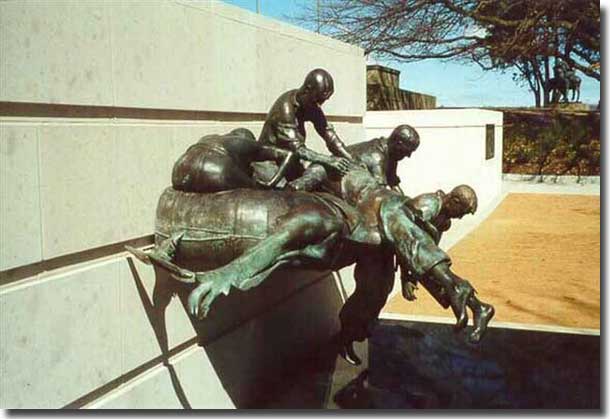
The Australian Merchant Seamen Memorial at Canberra Australia. Panel three carries
3 names from HMHS Landovery Castle: Bracken.G, King. G, and Sharp. R.
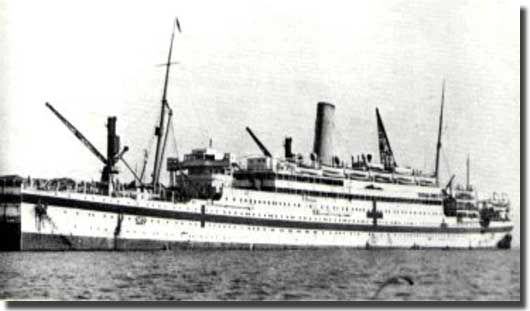
HMHS Asturias, torpedoed but survived to become a cruise ship in 1923
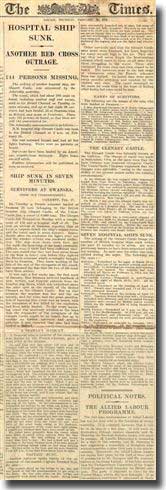
The Times report on the sinking of Glenart Castle.










